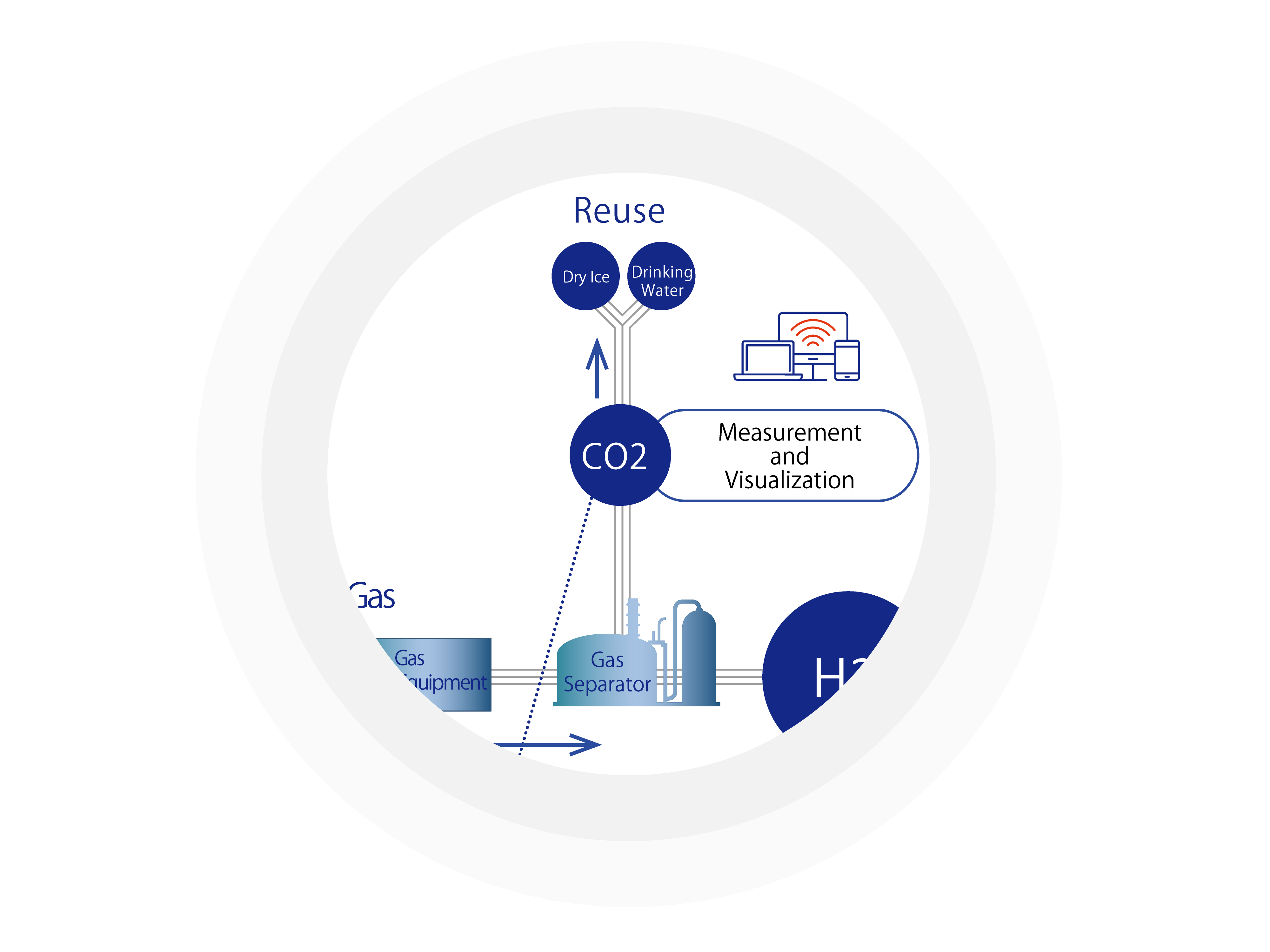Main Menu
Main Menu
- Resource Regeneration -
Circular Economy
Challenges and Solutions | Circular Economy | Regeneration | Hydrogen Energy Generation and Diverse
Waste Becomes Energy
The Mechanism of BIOTECHWORKS-H2®
Implementing a Circular Economy

Our concept of a circular economy:
Our concept of a circular economy refers to a resource-cycling economic model that minimizes waste and reduces the environmental impact. This approach emphasizes the transition from the traditional linear economy model (extraction, manufacturing, use, disposal in a one-way direction) and prioritizes the recycling and circulation of resources and products.
Zero Waste
Features of BIOTECHWORKS-H2® Plant
Environmental Impact Visibility

Incineration-Free” = 80% Reduction in CO2 Emissions(1)
「Over 80% of Non-Recyclable Waste Converted into Renewable Energy(2)=Minimal Waste
(1) Based on Proof-of-Concept (POC) data, we perform verifications in an operational environment, simulating small-scale functional cycles before embarking on large-scale development. This evaluation assesses whether the desired effects can be achieved and if the project is economically viable. Simultaneously, it helps identify areas for improvement and potential challenges.
(2) It is reported that 20% of waste is being recycled, as stated in the “General Waste Generation and Disposal Status for the Year 2021” by the Ministry of the Environment.
A Waste-Free Approach
Efficiency Without Waste
About CO2 Carbon Dioxide

All CO2 output is marketable = 100% reusable hydrogen
The amount of collected CO2 is reduced by approximately 70% compared to incineration.
The generated CO2 is 100% reusable.
(Comparison with conventional waste incineration, based on our research)
A Waste-Free Approach with No Incineration
Efficiency from Start to Finish
Regarding Slag Disposal Waste

All slag outputs are saleable = 100% Reuse
Your participation will save the Earth.
We are seeking like-minded companies to join us.
Through our cutting-edge technology, we can transform organic materials, the source of life, into renewable energy, hydrogen, without disposing of them. This project allows us to establish a circular economy, maintaining the inherent nature of organic materials in a sustainable and effortless manner.
The conventional approach to waste management, primarily focused on physical processes like incineration, has proven ineffective in reducing CO2 emissions over the years and has kept us trapped in the mindset that “waste equals trash.”
We are here to fundamentally change that perception.
© BIOTECHWORKS-H2®


